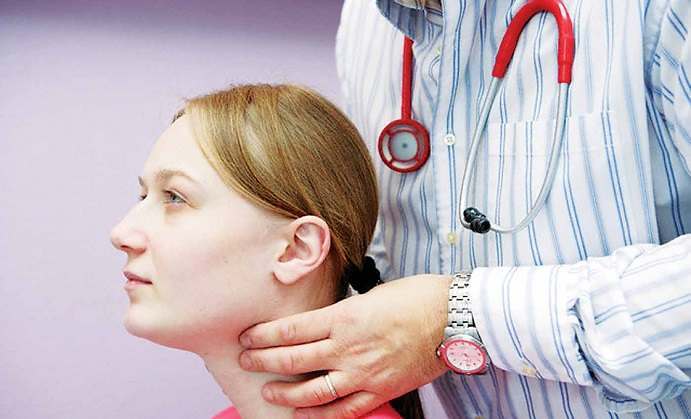A goiter is an enlarged thyroid gland. A goiter can mean that all the thyroid gland is swollen or enlarged, or one or more swellings or lumps develop in a part or parts of the thyroid. The thyroid gland is in the lower part of the front of the neck. It lies just in front of the windpipe (trachea). It has a right and left lobe which are connected together by a narrow band of thyroid tissue. It is roughly the shape of a butterfly. You cannot usually see or feel a normal thyroid gland. If the thyroid enlarges, it causes a swelling in the neck which you can see – a goitre. The thyroid gland makes thyroid hormones – called thyroxine (T4) and triiodothyronine (T3). These hormones are carried round the body in the bloodstream. Thyroxine and T3 help to keep the body’s functions (the metabolism) working at the correct pace. Many cells and tissues in the body need thyroxine and T3 to keep them working correctly.
 Certain foods and fluids are extremely injurious for goiter patients and should be avoided by them. These include white flour products, white sugar, flesh foods, fried or greasy foods, preserves, condiments, tea, coffee and alcohol. Iodine is undoubtedly most helpful in many cases, but It should be introduced in organic form. All foods containing Iodine should be taken liberally. These are asparagus, cabbage, carrots, garlic, onion, oats, pineapple, whole rice, tomatoes, watercress and strawberries.
Certain foods and fluids are extremely injurious for goiter patients and should be avoided by them. These include white flour products, white sugar, flesh foods, fried or greasy foods, preserves, condiments, tea, coffee and alcohol. Iodine is undoubtedly most helpful in many cases, but It should be introduced in organic form. All foods containing Iodine should be taken liberally. These are asparagus, cabbage, carrots, garlic, onion, oats, pineapple, whole rice, tomatoes, watercress and strawberries.
Watercress (Watercress) has been discovered to be one “I the best sources of the element iodine. It is valuable in correcting the functioning of the thyroid gland. Its regular rise, therefore, is highly beneficial in the prevention and treatment of goitre. A paste made of this vegetable can also be applied beneficially over the affected parts. It will help reduce swelling.
 Dandelion (dandelion) has also been found valuable in goitre. The leaves of this salad vegetable should be smeared with clarified butter, warmed and bandaged over the swollen parts for about two weeks. It will provide relief.
Dandelion (dandelion) has also been found valuable in goitre. The leaves of this salad vegetable should be smeared with clarified butter, warmed and bandaged over the swollen parts for about two weeks. It will provide relief.
Half the daily intake of food should consists of fresh fruits and vegetables, and the starch element should be confined to whole-wheat products and potatoes. The protein foods should be confined to cheese, peas, beans, lentils and nuts. All flesh proteins must be avoided.
Goitrogens are substances in food that can wreak havoc on the function of your thyroid gland. Goitrogens get their name from “goiter,” which is what an enlarged thyroid gland is called. People who follow a Paleo diet already avoid a few of the goitrogenic foods like soy and peanuts, but what about the other foods? Chances are, if you eat Paleo-style, your diet is rich in selenium and tyrosine, iodine, antioxidants, and other beneficial nutrients. Eat lots of fish, meat, poultry, and eggs, and enjoy some yogurt and grass-fed butter, if you don’t have issues with dairy products. If you have access to raw milk, you might want to consider adding it to your diet. Definitely continue to avoid wheat and soy. Add in all the other downsides (inflammatory properties, gluten issues, and endocrine disruption (from soy) and there are really no good reasons to eat either of them.
Do you want to find an effective Thyroid treatment? Check out our top rated Thyroid products











